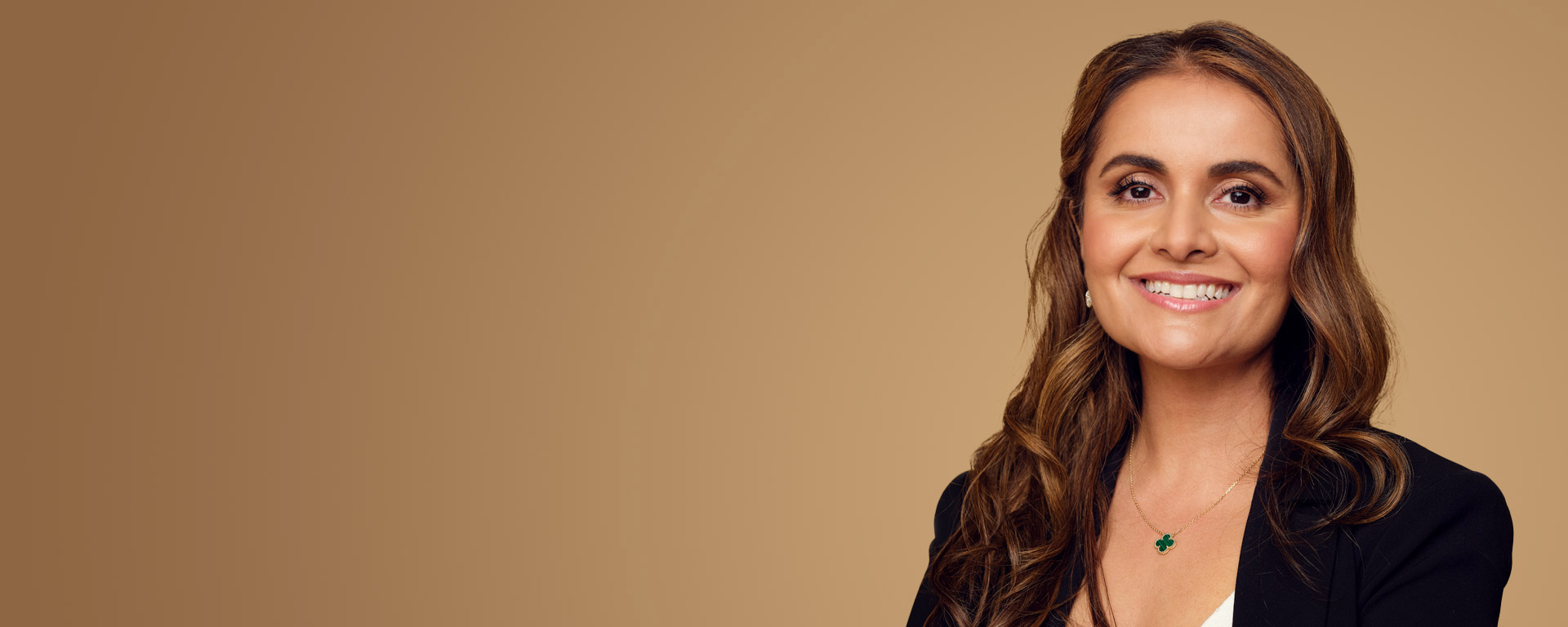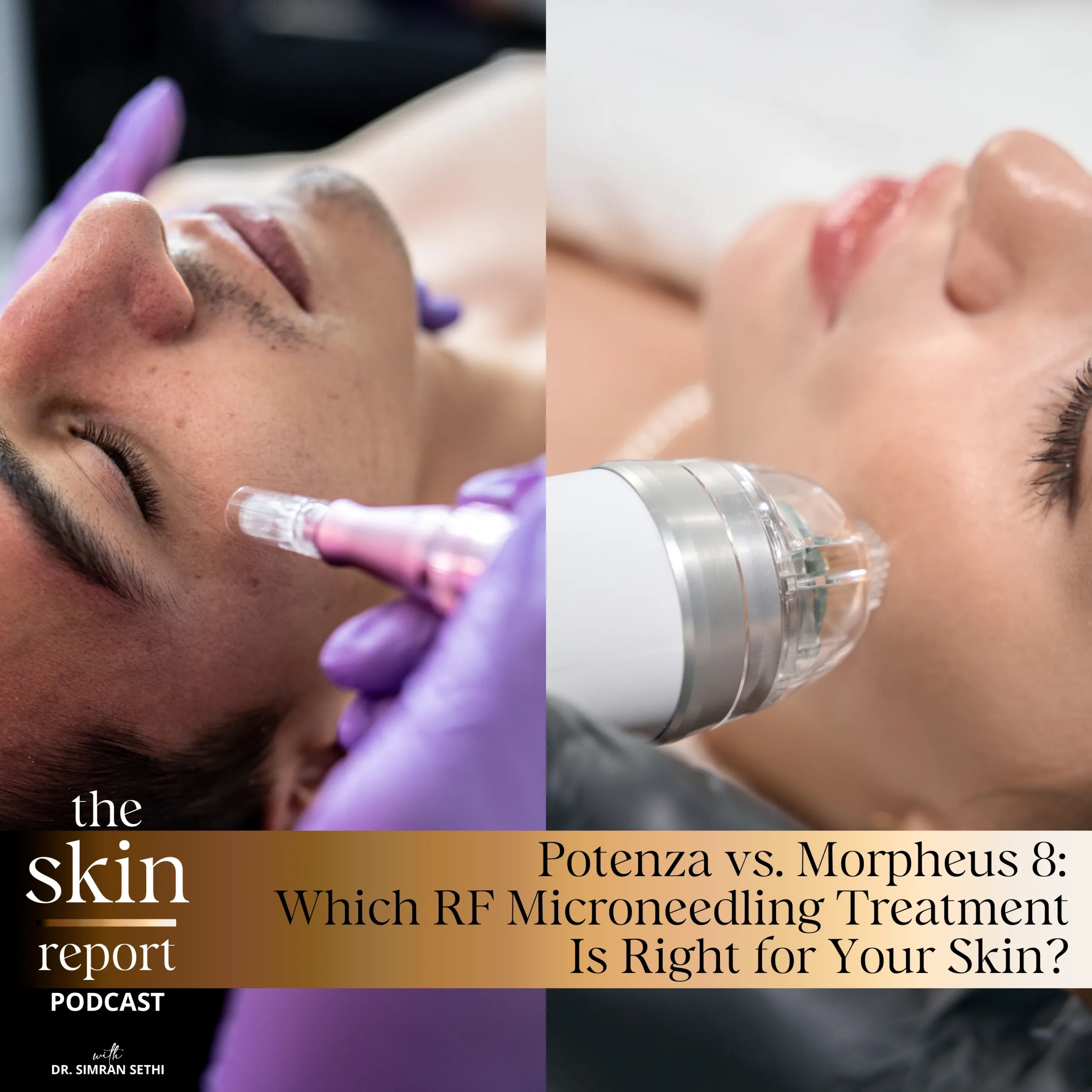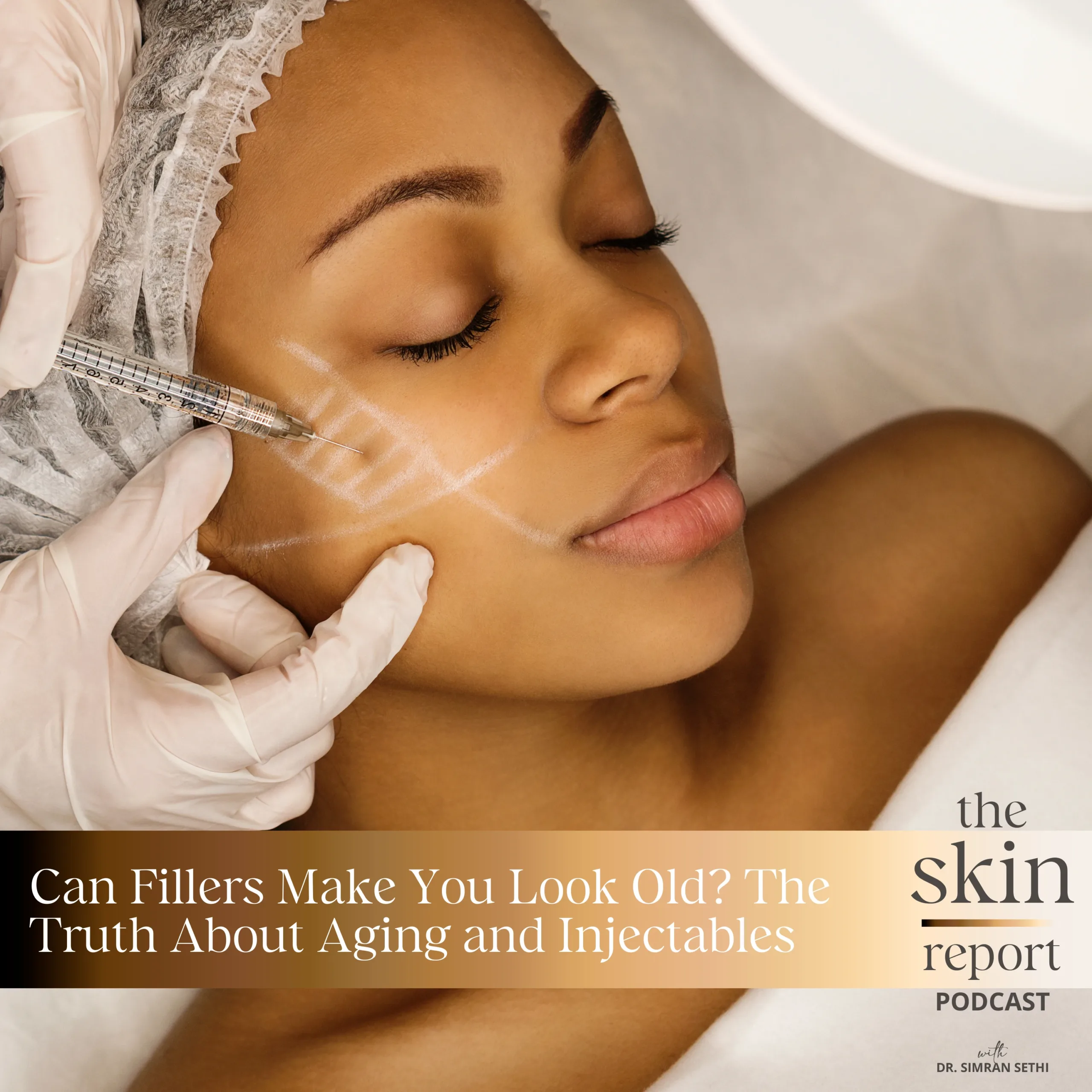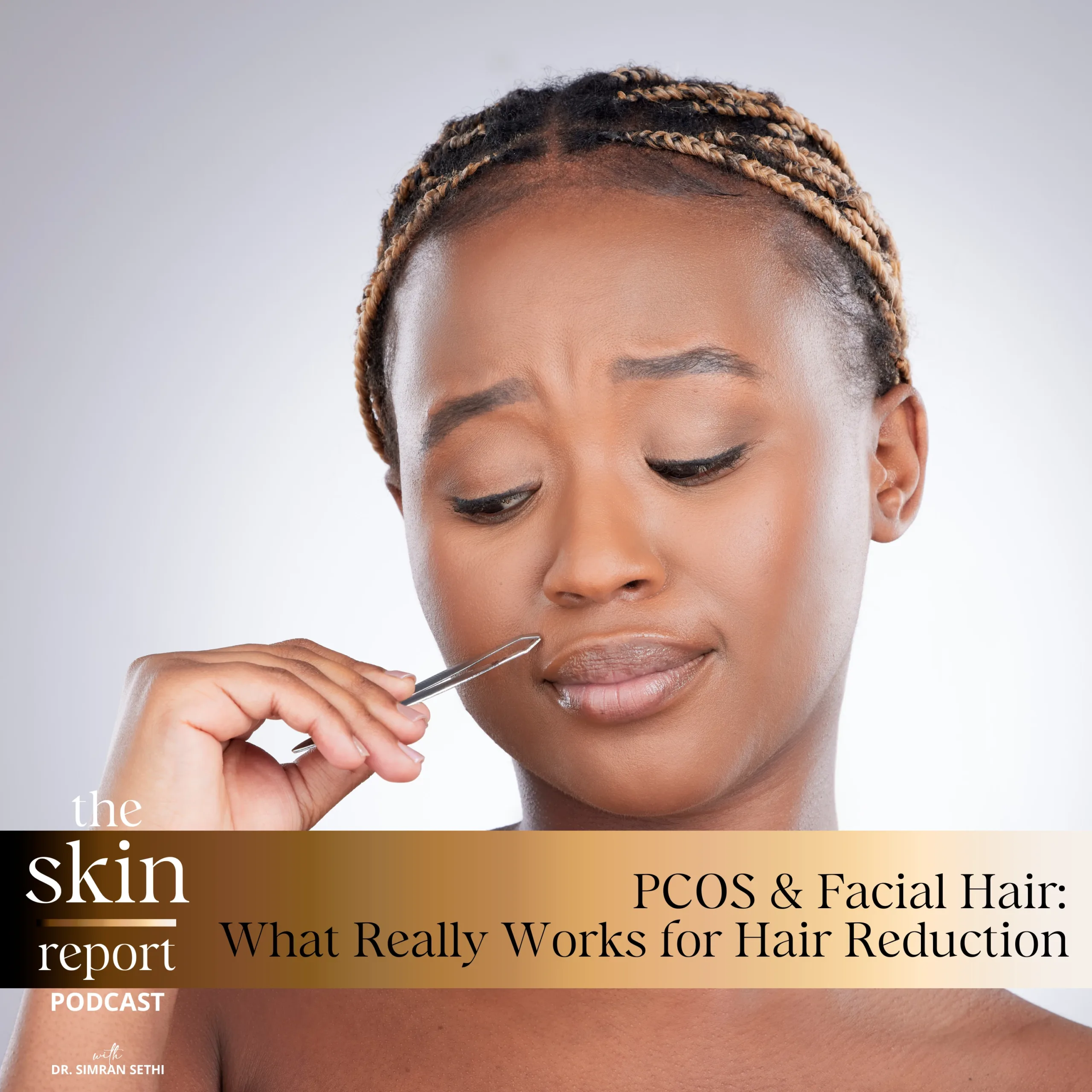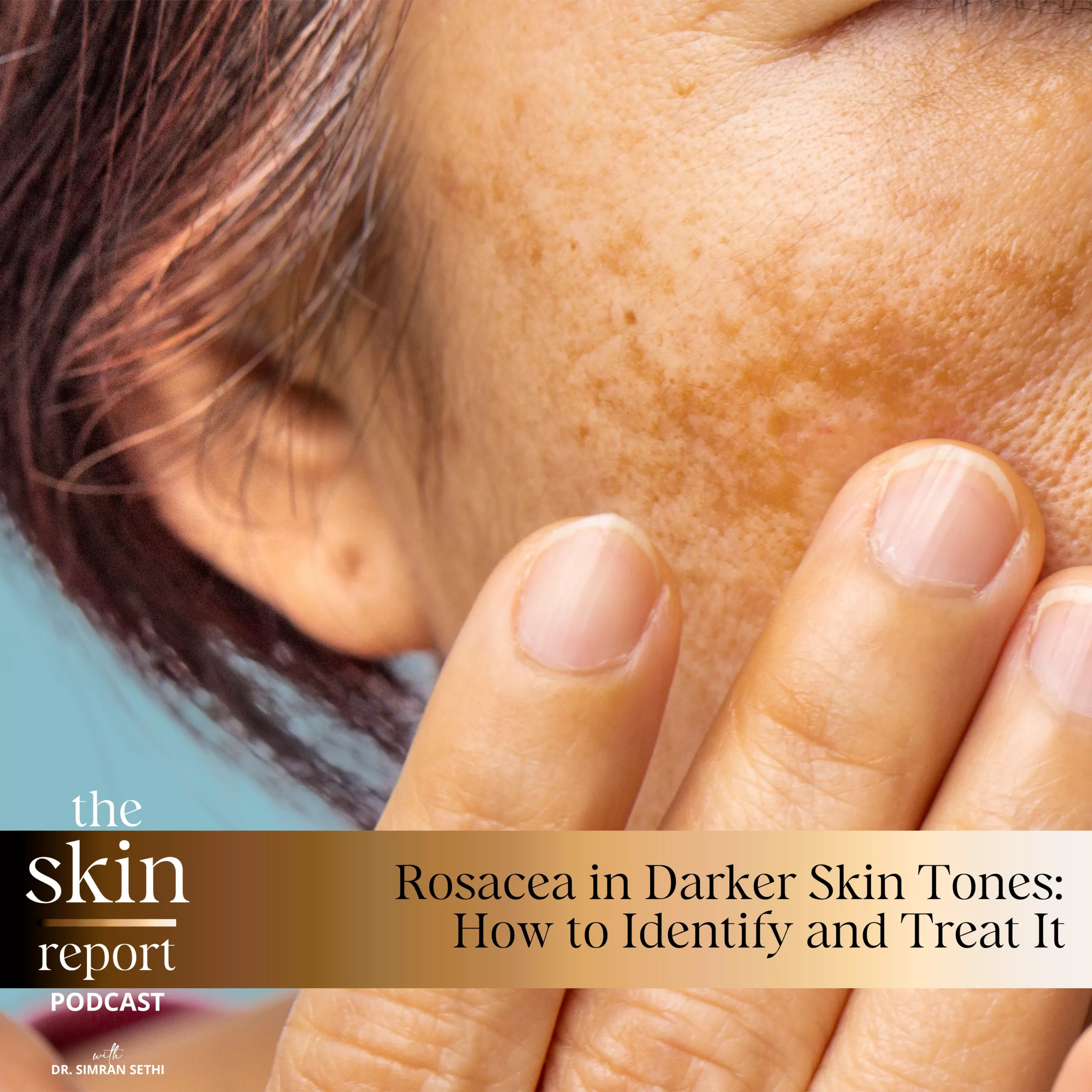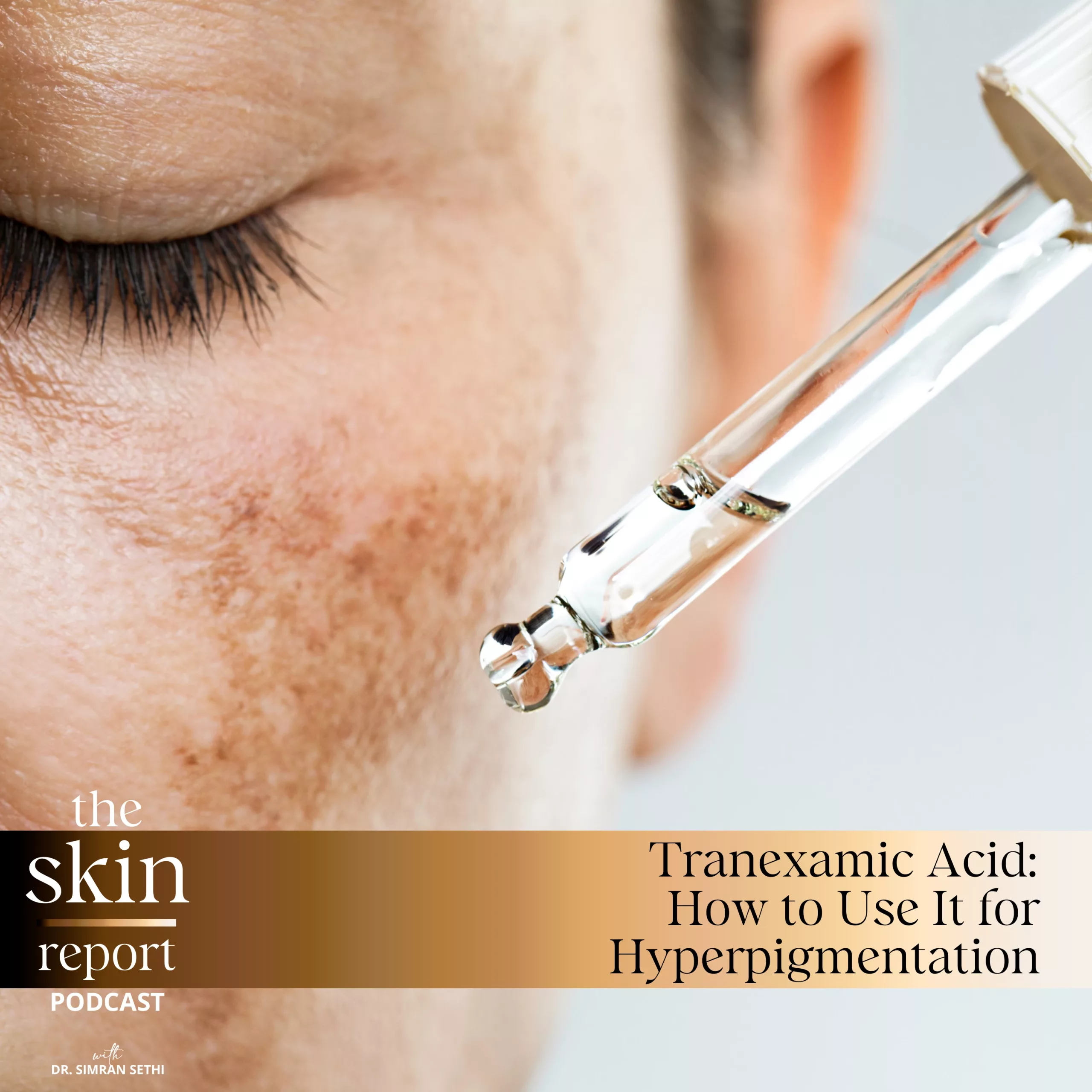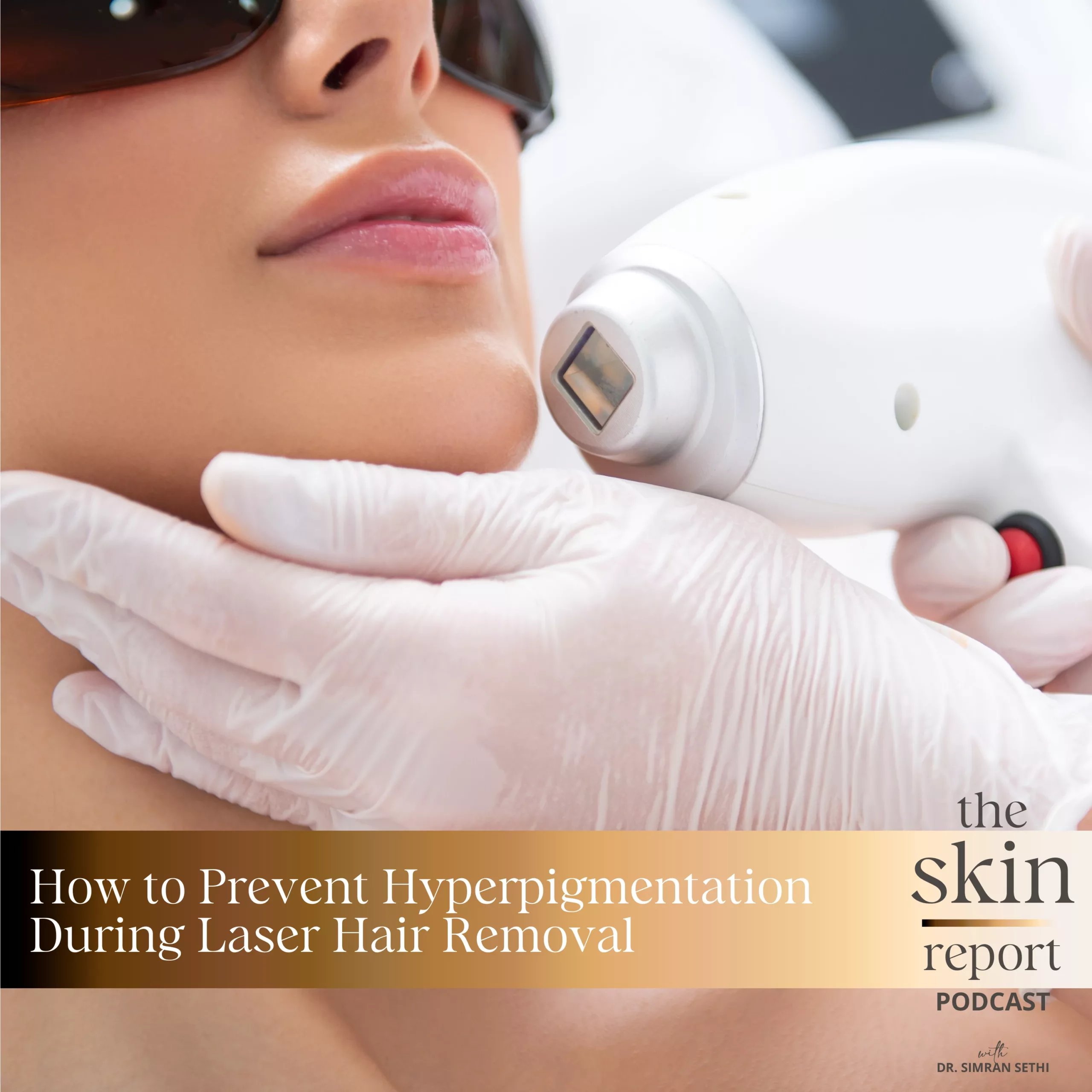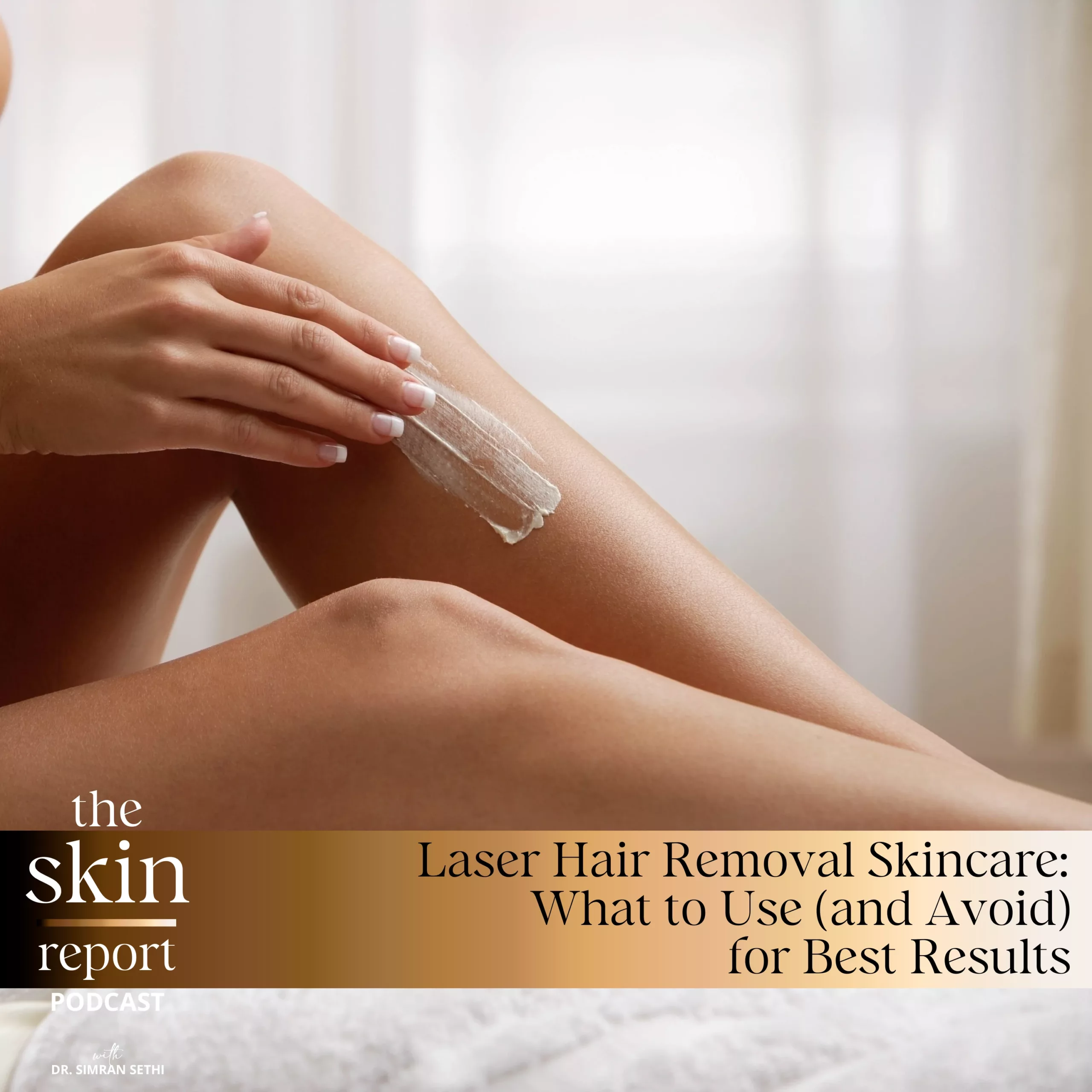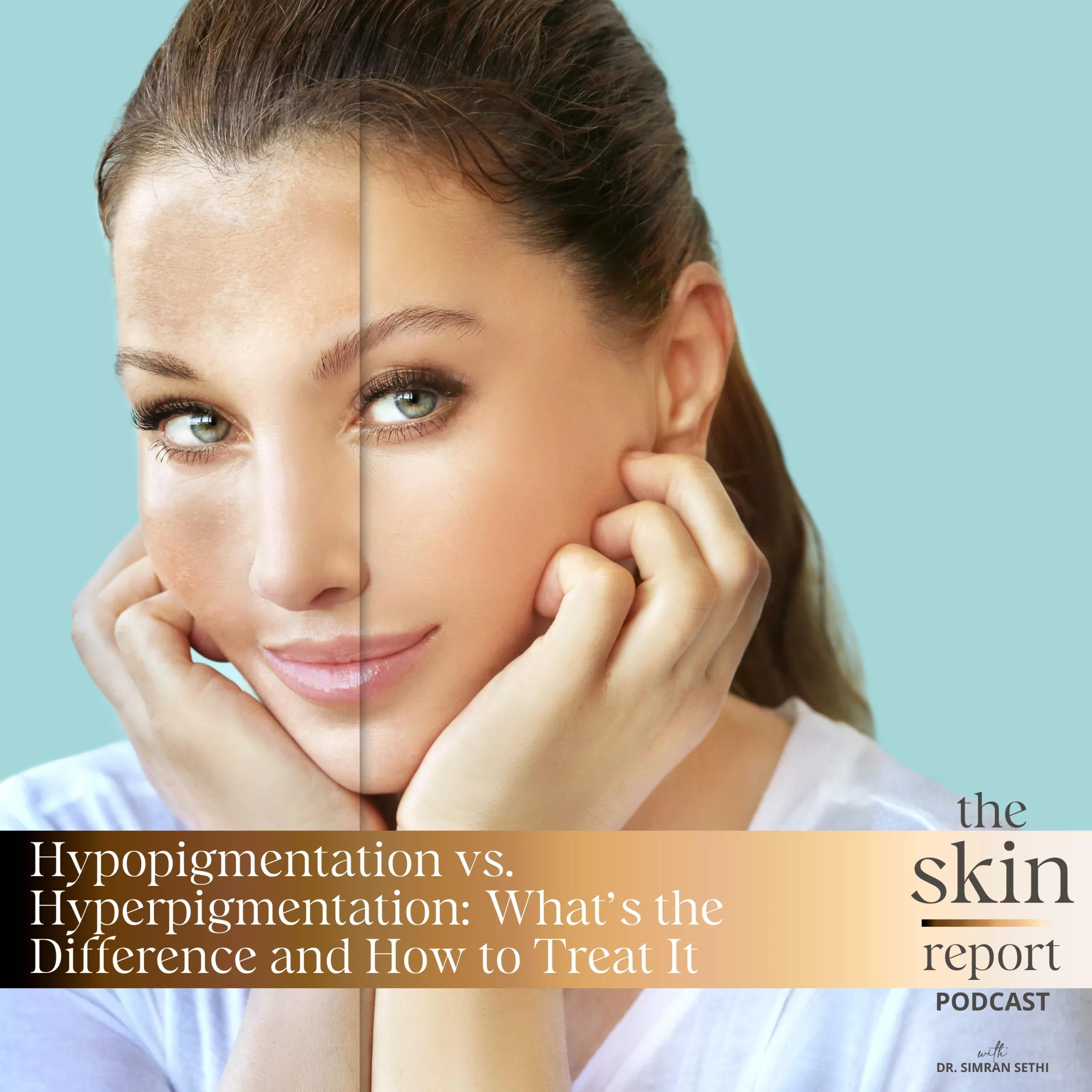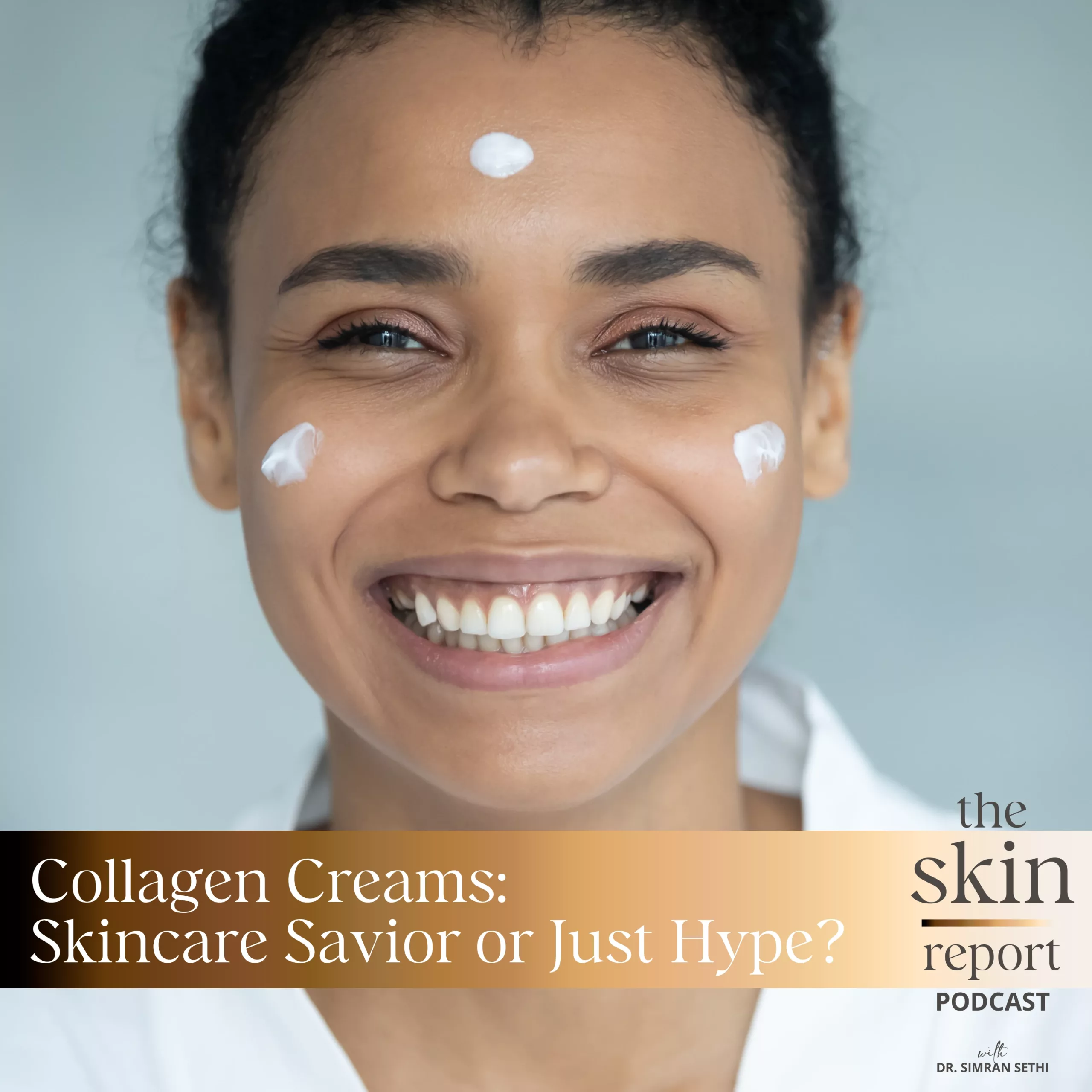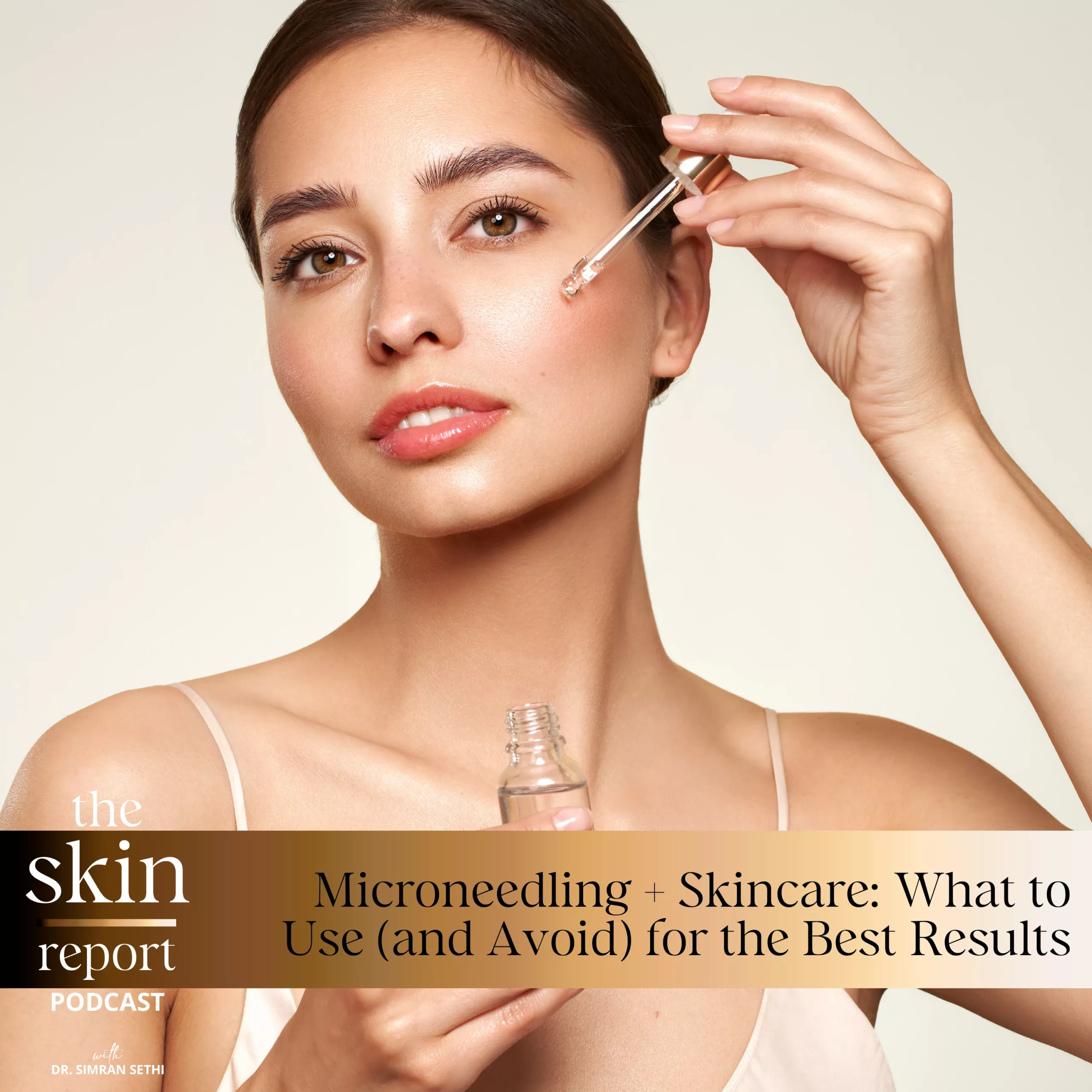The topic of retinol is commonly included in discussions about anti-aging and skincare, and retinol creams and retinol products line the shelves of beauty aisles far and wide. Of course, it is no secret by now that retinol can benefit the skin, but you may be curious as to why this is. So what is retinol exactly, and how does retinol work as a powerful skincare ingredient?
The Skin Report is a podcast created to educate listeners on methods to improve skin health for people of all ethnicities and ages. On this episode, host Dr. Sethi tackles the topic of using retinol for skin rejuvenation. She discusses the science behind retinol and how the vitamin A derivative works to accelerate skin cell turnover and fight wrinkles. She also educates listeners on choosing a retinol strength, how to apply retinol, and answers questions about the best practices for harnessing the power of retinol in your skincare routine!
Follow and DM a question for Dr. Sethi to answer on The Skin Report Podcast:
Renew Beauty Instagram:
https://www.instagram.com/renewmd_beauty/
RenewMD Beauty Medical Spas, California:
https://renewmdwellness.com/
Skin by Dr. Sethi — Retinol Lipid Complex:
https://skinbydrsethi.com/products/retinol-lipid-complex?_pos=1&_psq=retino&_ss=e&_v=1.0
The Zoe Report Article:
https://www.thezoereport.com/beauty/best-anti-aging-skin-care-tips-from-dermatologists
This transcript was exported on December 13, 2022 -view latest version here.
Skincare can sometimes feel overwhelming, whether it’s finding the right products, ingredients, or treatments. There’s a lot out there, but not always for people of African, Hispanic, Middle Eastern, East and South Asian descent. That’s why I set out to educate myself and others so that we can all feel beautiful in our skin. Hello and welcome to The Skin Report. I’m Dr. Simran Sethi, an internal medicine doctor, mom of three and CEO and founder of RenewMD Medical Spas and Skin by Dr. Sethi.
It’s now December, which means it’s that time of the year, whether you’re celebrating Hanukkah, Christmas, or Kwanza, you’re doing some holiday shopping. If you’d like to hear my advice on which skincare gifts are worth the money, tune into Episode 29 of The Skin Report. For today, however, I want to talk about a very important ingredient in skincare. One that you’ve heard me mention before, retinol. Retinol comes up in our conversations frequently and for good reason. It has skincare superpowers, but what are those powers real? What is science behind this high demand ingredient? Retinol is a derivative of vitamin A, first discovered in 1913 with numerous studies over the past century studying its chemical structure and properties. It has become a mainstay skincare ingredient used in acne treatments, pigmentation correction, and anti-aging. While the skincare industry can be subject to rapid trends, retinol always prevails as it has been studied for decades with excellent clinical data to show increased cell turnover and collagen production. So let’s tackle why these two results are helpful to our skin.
First, retinol can help increase cell turnover, and why is this helpful? Our skin’s job is to protect us from the elements, which means it is constantly exposed to sun, pollution, blue light damage, wear and tear, bacteria, fungi, scratches, rashes, et cetera. These factors lead to damage, fine lines, wrinkles, spots, and more. In order to properly protect us and correct this damage, our skin has to constantly create a new strong and healthy skin layer. This is known as our skin cell turnover.
I want to make clear that throughout our lives, we will always experience sun, blue light and pollution, damage, acne scars, and more. While we can try protective measures, it is a common part of the way we live. This means that any damage that we experience on our skin needs to be corrected and retinol is the best, most tried and true method of correcting skin damage. In our younger years, the damage gets corrected fastest with young skin having a high turnover rate, the changes due to pollutants don’t stay in our skin long and our skin looks smoother and more radiant all the time. As we age, however, our turnover rate reduces. We discuss this in Episode 2 of the Skin Report, but I’d like to chat about it here. In general, full turnover takes 40 to 56 days. However, as we age, this skin correction process slows down and the changes from all these exposures remain on the skin longer.
The age group turnover rates are as follows. Babies and children, 10 to 14 days. Teen, two to three weeks. Twenties, three to four weeks. In your thirties, four to five weeks. Forties, five to six weeks. In your fifties, eight to 12 weeks. As you can see, there’s a tremendous slowdown in the turnover rate in our fifties. This happens in both men and women because of andropause and menopause respectively. In a later episode, we’ll cover how hormonal shifts in estrogen, progesterone, and testosterone can impact the skin, hair, and body overall. We will also cover what you can do early in how to stop those changes. One last note about skin cell turnover before we move on. Over the past few decades, retinol has continually been clinically proven to accelerate skin cell turnover in studies published by the National Library of Medicine, Harvard Health Standard Medicine, and more.
By increasing skin cell turnover, retinol helps the skin actively and rapidly repair damage caused by the elements, keeping the skin clear and free of fine lines, wrinkles, and abnormal pigmentation. So what else does retinol do to help improve the look and feel of our skin? It can help in collagen production. After six months of consistent retinol usage, new collagen synthesis is observed. Just the increased skin cell turnover already makes the skin look clearer, but the increase in collagen production will make skin stronger and more resistant to wrinkles and fine lines in the long run. So how does retinol apply to you and your skincare routine, and how should you apply it? We’ll answer that and more when we return.
If you take a quick look online for products with retinol, you’ll find dozens of formulations and strengths. Even when comparing medical grade items from the same brand, you may find yourself a little lost and I felt the same way before I specialize in skincare. So what’s the right retinol formulation and strength for you? This is a common question and an important one, especially for skin of color. Taking a gradual approach with a medium strength retinol is my go-to strategy. As too strong of concentration keeps people’s skin in a constant state of dullness and peeling and redness. I find that two week of a concentration such as is often found in drugstore creams, can actually end up being a waste of money in the long run as they aren’t delivering the same result that stronger concentrations can. This is even true for people with sensitive skin or conditions like eczema, melasma, rosacea, and other inflammatory skin conditions. Taking an approach with using a medium strength and starting conservatively will allow people with all skin types and conditions to enjoy the benefits of retinol.
Using retinol does not mean that you have to peel infinitely. Peeling does not mean that your retinol is working. The goal of retinol is to give you stronger and healthier skin. Not red, erythematous and flaky skin all the time. So if your retinol is doing this, you may not be using the correct strength or using it incorrectly. Therefore, I tend to go for a medium strength. But what does this mean? How can I spot a medium strength product? When it comes to retinols, 0.25% is typically considered low strength. 0.5% is considered medium, and a high strength would be 1%. I like to use a 0.5% strength retinol. Many people think that a higher strength like 1% will yield more results making it the best option, but I’d like to reframe this thinking. What yields the best results is the use of an effective strength consistently. Dermatology studies have consistently shown that using a 0.5% retinoid is equally effective as a 1% formulation. So what is the difference? Why off for the 0.5%?
A 1% formulation will show faster collagen production and fine line reduction by a few weeks when compared to a 0.5% formulation. However, the stronger strength will do this at the expense of causing significant peeling and inflammation of the skin. The skin can eventually grow accustomed to this concentration. However, in most cases, the peeling and inflammation only improves very moderately. Instead, if you utilize a product with a 0.5% concentration, you can still get great results, but the skin will not peel and stay inflamed indefinitely. This is important because the rate of retinol use abandonment is generally very high with a 1% concentration, and most people just conclude thatthey cannot use any retinol. By using a medium strength, we can all use retinol for the rest of our lives so that we can enjoy its many benefits. Remember, retinol’s benefits can only be realized with consistency and long-term use. If a 1% formulation is preventing that, it is not useful. Besides the discomfort of the peeling and inflammation as a result of high concentrations, it’s just not worth it if a lower concentration can produce similarly significant benefits without the harsh side effects.
Many people from South Asian, Middle Eastern, and African descent shy away from retinol’s, and I can completely understand why. When using retinol, people with this skin type often experience peeling and irritation, their skin becomes even darker and duller. Whenthis happens, they’re more likely to completely stop using retinol and conclude that they may never be able to use it. I agree with this logic, but there isn’t any reason for anyone no matter what their skin color, to not take advantage of the clinically proven benefits of retinol. It often comes down to which products you use and how to use them, and when you find a product that works with your skin type and tone, you won’t want to let it go. This is exactly why Myelin’s Retinol Lipid Complex is by far the most popular product and my personal favorite.
This retinal product has become a game changer for all skin tones, especially darker skin tones. Instead of purging and peeling the skin like the traditional retinol formulations, the Retinol lipid rich complex has all the features you want in a clinical grade retinol while being easy and enjoyable for all skin types. Why is this so? Let’s go over it. It is a medium strength 0.5%, which means that within just a few weeks of
This transcript was exported on Dec 13, 2022 -view latest version here.The Skin Report Episode 32 (Completed 12/13/22)Transcript by Rev.comPage 3of 4usage, your skin will start looking clearer. After three months of consistent application, it will boost its collagen production. All of this will happen without your skin having to peel and get inflamed as it may on a 1% concentration. The retinol lipid complex also contains phospho lipids to nourish the skin barrier, something that traditional retinols disrupt when they cause excessive inflammation and peeling. This is exactly why when my patients use this product, they’re surprised at how easily their skin has handled the retinol and how smooth and vibrant it looks.
Most of my patients are of South and East Asian, Middle Eastern, and African descent, and so many of them have been led to believe that their skin is too sensitive for retinol. This is such a shame because this is a large population of people who can definitely enjoy the vast benefits of retinol, but because there have not been any efforts to create a retinol specifically for them, they’ve just concluded that they can’t use one. This is exactly what inspired me to create my retinol formulation by choosing a medium strength that is strong enough to give results and pairing it with rich phospholipids. I’ve seen my clients go from swearing never to touch retinol to raving about how the retinal lipid complex has completely transformed their skin and how smooth and clear it looks just after a few weeks of usage. Also, if using the retinal lipid complex, you do not have to apply any additional moisturizers or serums to soothe the skin. The product formulation already takes care of that.
I think that retinol usage in all skin tones is important, but we have a lot of misconceptions about it in skin of color. So for darker skin tones or mature skin with any skin tones, I’ve put together some tips on how to successfully incorporate retinol into your skincare regimen. Be sure to use a medium grade retinol of 0.5%. Make sure that you’re using a clinical grade retinol as in the US, clinical grade are the only ones allowed to have a greater potency. This is an important concept as over the counter ones do not have the same effectiveness because they’re less potent. As with any new product, but especially retinol, you want to start off slow and then work your way up. Start using it three times a week for the first four weeks, then bump up to using it every other night. A month after that, you can use it daily at night.
If you’re using a plain retinol formulation that only contains retinol, apply a rich moisturizer above the retinol to reduce inflammation and peeling that can frequently occur. As retinol is a powerful ingredient, there can be many questions or concerns my patients may have, so what are they? Some of the answers you may already know while others may surprise you. When do I use retinol? Retinol should only be used at night. If used during the day, it’ll only break down and will increase your skin sensitivity to the sun. Can I still get treatments done while using retinol? I recommend stopping the user of retinal a few days before performing any skin procedures like micro-needling or lasers so that your skin is not overly sensitive during the treatment. Then you can restart a week after your treatment. What age should I start retinol? Retinol has been studied extensively for decades and its indefinite use starting early will promote healthier and younger looking skin.
In teenagers, it can be a great way to fight acne. In your twenties, it will erase sun and acne damage, and in the thirties onwards, when collagen production and skin renewals start to slow down, it will accelerate those functions. Ideally, we should start retinol in our mid to late teens. However, starting retinol at any age is better than not at all. The sooner we begin, the sooner we gather the full benefits. Another question I receive is, should I use tretinoin or retinol, and what’s the difference? Tretinoin is about 20 times more stronger than retinol as it directly targets the retinoic receptors on skin cells.
Retinol however, is the precursor to tretinoin, which means that an enzyme has to first convert retinol to tretinoin for it to target the skin receptors that stimulate collagen production and increase skin cell turnover. Again, just like my explanation on concentrations, tretinoin is generally very difficult to use and create so much peeling dullness and inflammation that staying compliant with it is very difficult. In more mature skin or in skin of color, it breaks down the skin barrier quickly, creating a lot of uneven pigmentation and darker skin tones.
The only people who I think can use tretinoin are teenagers with a lot of acne. While this will reduce breakouts, it also creates a lot of dryness and post-inflammatory hyperpigmentation in darker skin tones. Instead, I would recommend using tretinoin for three to four months to bring acne under control and then switching to retinol after that. When I treat teenagers with mild to moderate acne, I still use retinol first, as this is generally very successful and only if they’re not achieving enough acne control with retinol or have severe acne. I will use tretinoin. If you want to read up on some more of my advice regarding retinol, you can check out an article published by the Zoe Report, which I contributed to. You can find a link for it in the show note. If you have any retinol questions that I didn’t cover in today’s episode, please comment them below and I’d be happy to answer them.
If you’d like to learn more about science, back skincare or medical aesthetic treatments, please subscribe to turn on notifications for the Skin Report so you always know when a new episode is up. We have a newsletter that you can sign up for on the Skin Report by drsethi.com so that you can stay up to date on all our new episodes, blogs, products, and more. Additionally, if you have a skincare question or want to make an episode topic recommendation, please message me at the Skin Report by drsethi.com. We’ve received some great questions so far and I’ll try and answer them at the end of every episode, so keep them coming. Thanks for listening, and until next time. Love the skin you’re in and celebrate your beauty.
Transcript by Rev.com

